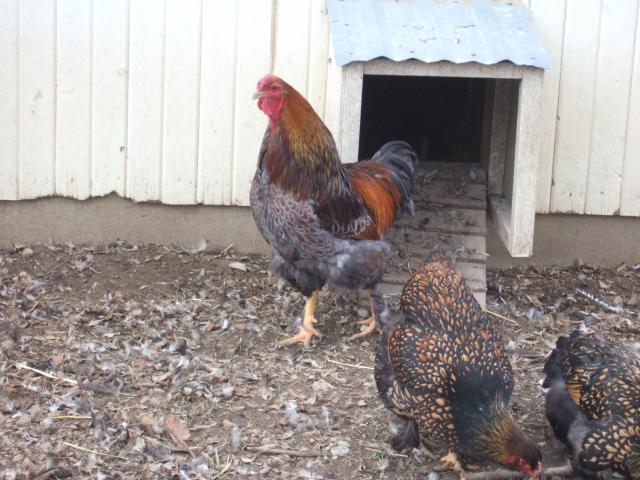A gene is a piece of DNA at a particular location on a particular chromosome.
Alleles are the various alternatives for a specific gene: blue versus not-blue; white versus not-white; silver versus gold; short legs versus not-short-legs; pea comb versus not-pea-comb; silkie feathers versus not-silkie-feathers; etc. For some genes there are only two alleles (blue versus not-blue, columbian versus not-columbian. For other genes there are more than just two alternatives: the E locus alleles are E (extended black), E^R (birchen), E^Wh (wheaten), e+ (not-extended-black, aka duckwing), e^b (brown).
Amongst the alleles for a particular gene there is an order of dominance. With the exception of the genes on the sex chromosomes, every creature has two of every gene. When both alleles for a gene are the same, that particular allele will control the associated features. When the creature has two different alleles, the dominance for that particular gene controls. Simplest explained is dominant and recessive for a gene with two alleles. Not-silkie is dominant to silkie; so, if a bird has a not-silkie allele, regardless of the other allele, the not-silkie allele controls: a bird who is HH or Hh will not have silkie feathering; only one who is hh (recessive alleles only) will be silkie feathered, because no more dominant allele for that gene is present.
Having two copies of the same allele is called homozygous, sometimes denoted "hom." Having two different allels is called heterozygous, sometimes denoted "het."
Incompletely dominant means that a bird who is heterozygous displays characteristics intermediate between homozygous for the dominant allele and homozygous for the recessive allele. The blue gene is a good example of this: hom blue, BlBl displays as splash (very diluted); het blue displays as blue (diluted); hom not-blue displays as black (undiluted).









